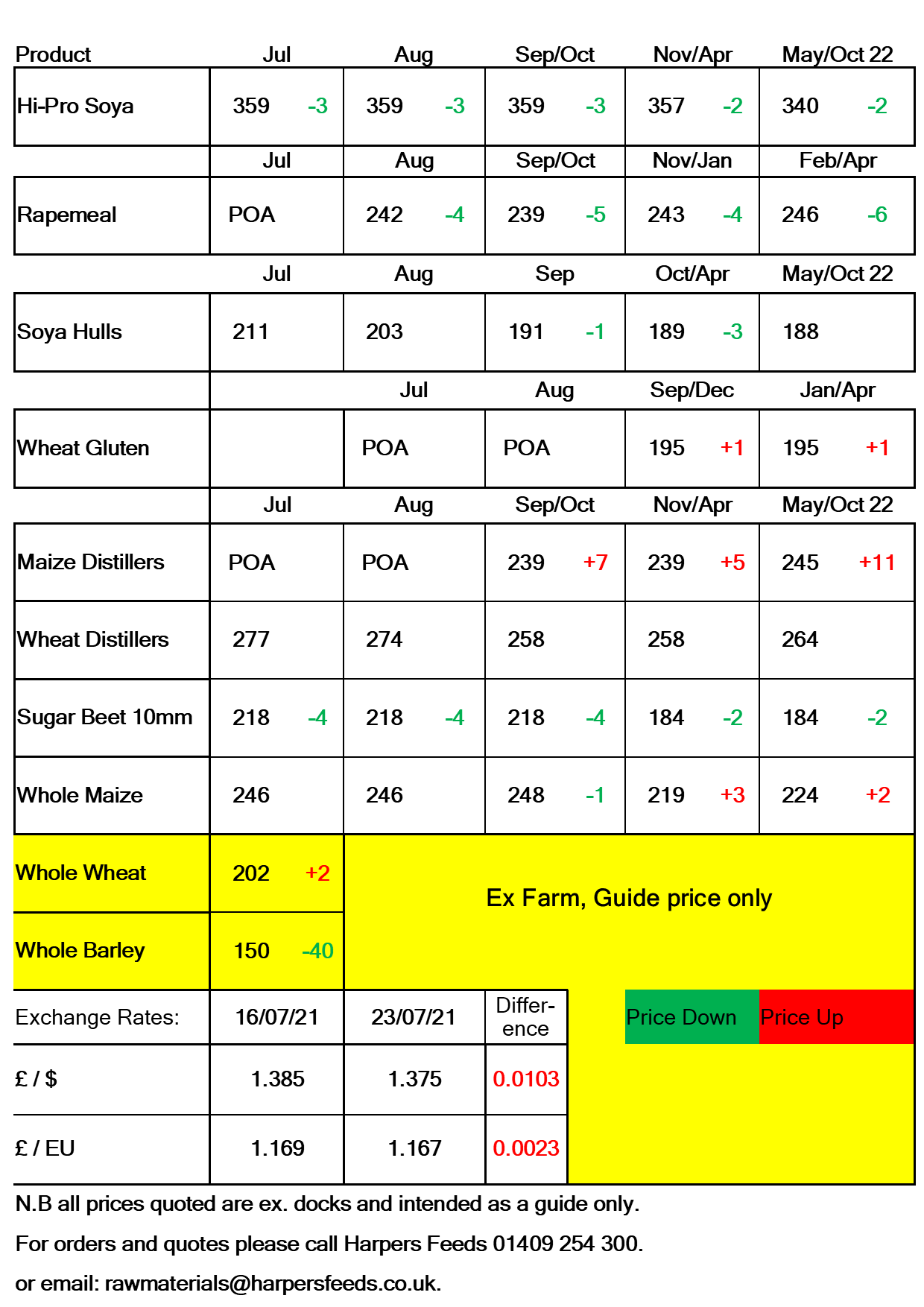Harvest 2021 is now underway, one to two weeks later than usual as combines hit the fields of winter barley, with growers keen to make the best of the dry weather.
With temperatures in the highs of 30C, quality and yields are variable, due in part to the cold temperatures in April and rather wet winter.
Spring wheat crop concerns in the US and Canada are still seeing ongoing discussions with the enduring heatwave in key areas.
Net US wheat sales of 473.2kt for 2021/2022 were up 11% from the previous week. Compared to corn, wheat export sales have been above expectation with 471,000MT exported this week.
Forecast for potential rainfall in certain areas of the US at the back end of the 11-15 day forecast put pressure on the soybean market. Despite concerns over the accuracy of these forecasts, the trade seemed happy to focus on this timeframe. There was a marginal 1% increase in the proportion of soybeans rated good to excellent.
Looking ahead, global markets will continue to react to weather, as harvest, especially for US corn and soybeans, remain a while off and is going through key yield determining stages.
Contact the office on 01409 254 300 for on farm prices.
Email: Rawmaterials@harpersfeeds.co.uk







